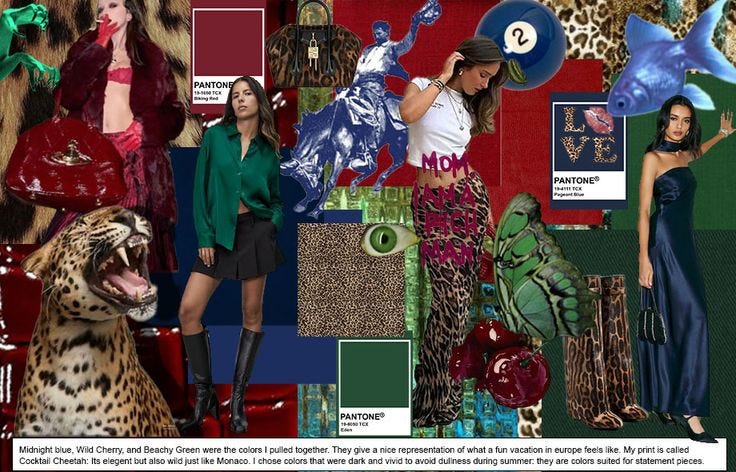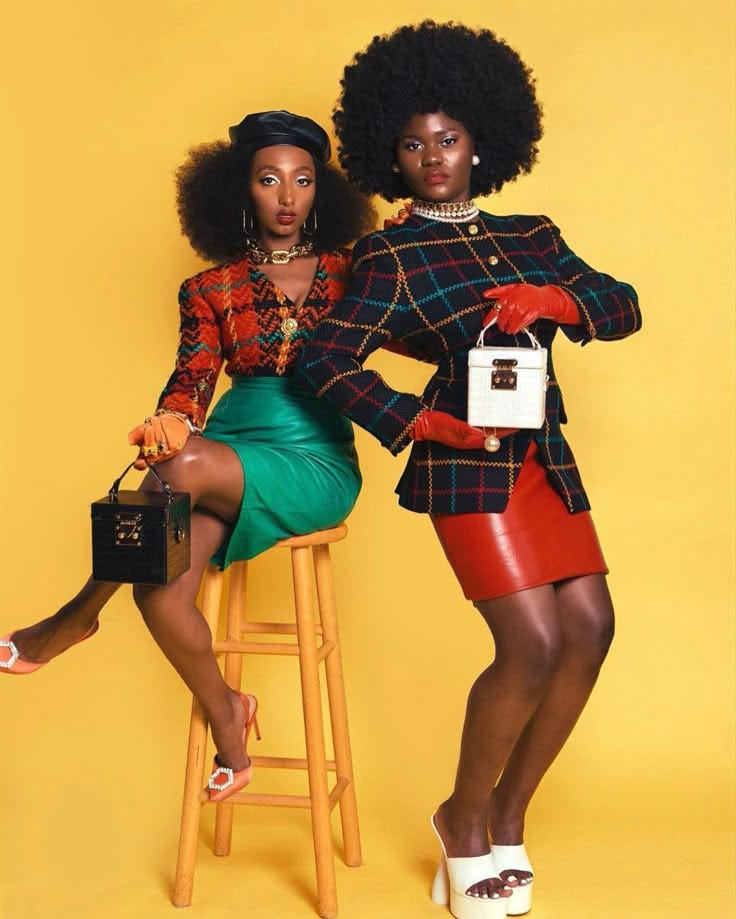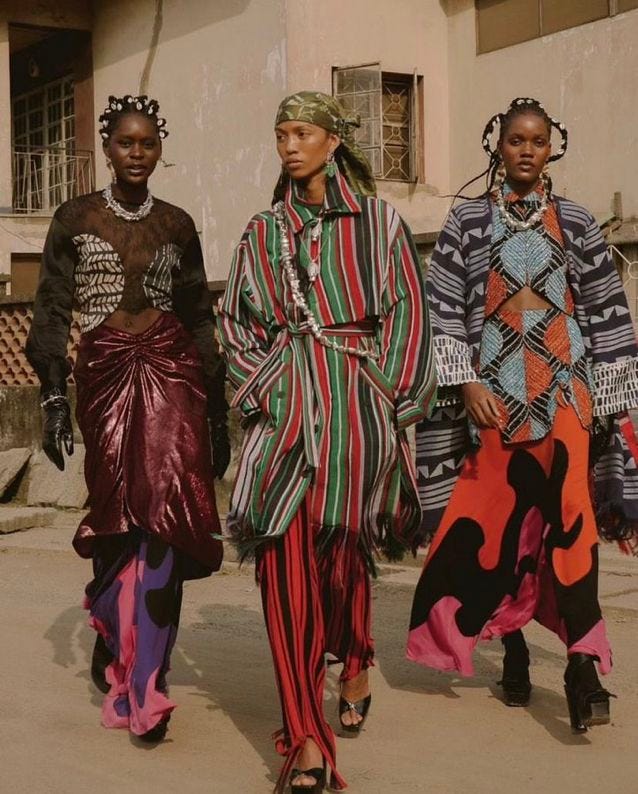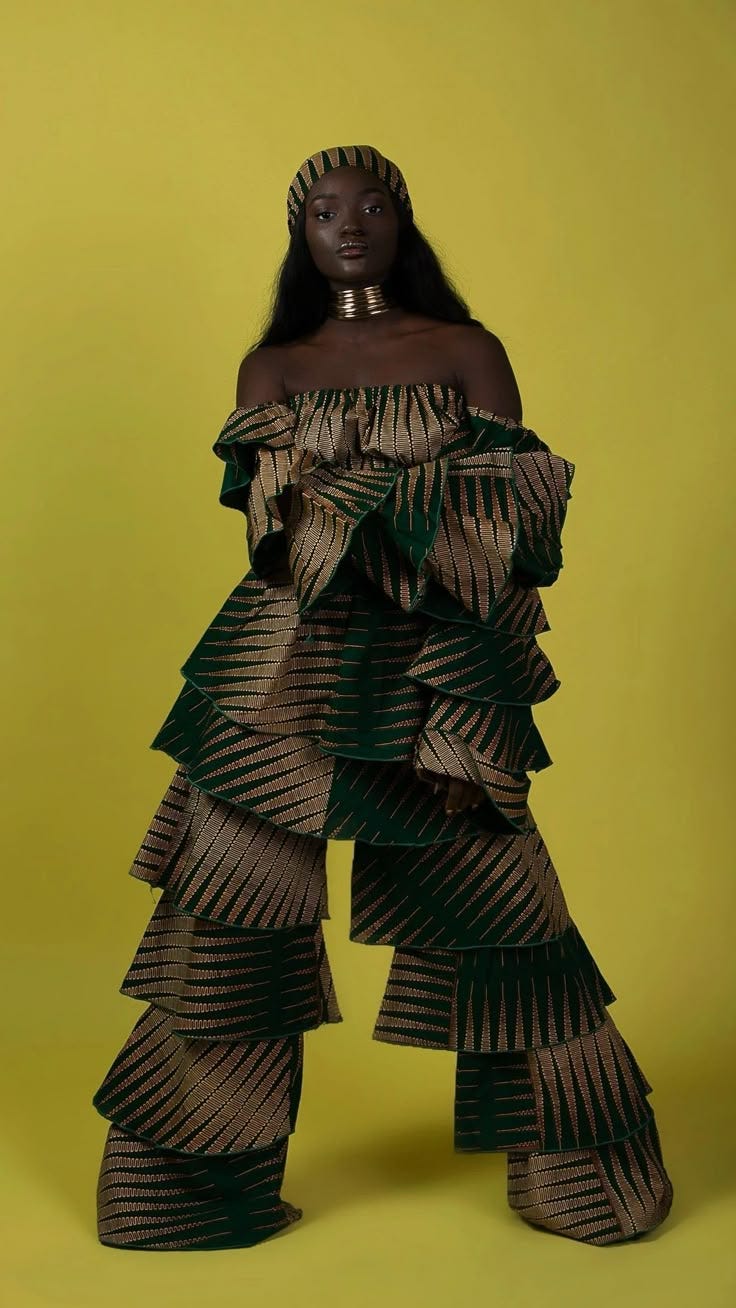From Concept to Closet: 8 Secrets Behind Brain Love's Designs That Make You Feel Something
How thoughtful design principles create clothing with deeper meaning and emotional resonance
The most powerful fashion doesn't just change how you look. It transforms how you feel. While mainstream clothing focuses primarily on visual impact, a new wave of designers is creating garments engineered to evoke specific emotional responses and support mental wellbeing. This approach represents a radical reimagining of fashion's purpose in our lives.
In a recent conversation with Archie Clay III, founder of Brain Love, I gained fascinating insights into the intentional design process behind clothing that creates emotional impact. While Brain Love serves as an illuminating example, these principles transcend any single brand, offering lessons for anyone interested in the psychology of fashion and how design choices influence our emotional experiences. Let's explore the eight secrets behind creating clothing that makes you feel something.
Designing from Feeling, Not Just Aesthetics
The most emotionally resonant fashion begins with feeling rather than visual concepts. Instead of starting with trend forecasts or aesthetic categories, deeply impactful designs originate from emotional states the designer hopes to evoke in wearers. This feeling-first approach creates garments that communicate on a level beyond visual appreciation.
When describing his design inspiration, Archie referenced specific emotional qualities: "It felt good. It felt warm. It feels inviting. It feels safe." By beginning with these feeling states rather than visual concepts, Brain Love creates pieces that communicate on an emotional frequency. This approach reverses the standard design sequence. It starts with desired feelings and works backward to identify aesthetic elements that evoke those responses, rather than beginning with visual concepts and hoping they trigger emotional connections.
Fashion storytelling becomes more powerful when designers clearly identify target emotional experiences before aesthetic development begins. For mission-driven brands focused on impact fashion, this process means honestly assessing whether design choices genuinely support emotional goals or merely follow industry trends. The most successful pieces achieve coherence between intended emotional impact and actual wearer experience, a resonance that creates lasting connection beyond seasonal trends.
Ethical fashion businesses increasingly recognize emotional impact as central to their mission rather than secondary to visual design. This shift acknowledges that genuinely sustainable consumption patterns require emotional durability, creating pieces people form long-term attachments to rather than discard when trends change. By designing from feeling first, brands create garments that remain relevant despite shifting aesthetic trends because their emotional resonance maintains consistent value to wearers.
Drawing Inspiration from Emotional Eras
Historical reference points provide powerful emotional shorthand in fashion design. Certain fashion eras carry distinct emotional signatures that designers can leverage to evoke specific feeling states. This historical borrowing goes deeper than aesthetic revival when designers understand the emotional context that produced original styles.
Archie described drawing specifically from 1970s and 1980s fashion: "I always say it's the seventies and the eighties. The seventies and the eighties' fashion perspective was so earthy, right? Earthy and fun and loving." This reference isn't merely aesthetic appreciation but recognition of the emotional qualities those eras embedded in their design language. By understanding how historical contexts influenced design choices, contemporary designers can adapt those elements to address current emotional needs.
Fashion for change often references historical movements and their associated aesthetics to connect contemporary issues with historical struggles. This continuity creates powerful emotional resonance, particularly for wearable activism that seeks to evoke the courage and solidarity of earlier social movements. Black-owned fashion brands frequently leverage this connection to create pieces that honor historical resilience while addressing contemporary challenges, creating emotional bridges across generations.
Social enterprise fashion that draws inspiration from emotionally resonant historical periods creates connection points between generations. Younger wearers experience emotional qualities of eras they didn't personally witness, while older generations reconnect with formative emotional experiences. This intergenerational emotional bridging serves important psychological functions beyond trend cycling, creating shared emotional vocabulary across age groups through thoughtfully adapted design elements.
Color Psychology Beyond Trends
Color selection represents one of the most powerful but often underutilized tools for creating emotional impact in fashion. While mainstream fashion approaches color primarily through trend forecasting, emotionally intelligent design uses color psychology principles to intentionally evoke specific mental and emotional states.
Brain Love's color approach reflects this deeper understanding: "If you look at our clothes and the color palettes and the art, I wanted it to be art. I wanted it to feel like art." This artistic approach to color moves beyond seasonal trend dictates to create palettes with emotional coherence and psychological impact. Colors aren't selected merely for visual appeal but for their documented effects on mood, energy, and mental states.
Mission-driven brands incorporate color psychology not just in primary garment colors but in subtle details, transitions, and color relationships within designs. These thoughtful applications create layered emotional experiences rather than one-dimensional impacts. Fashion with purpose uses color strategically, placing energizing hues where activation is beneficial and calming tones where stress reduction matters, creating garments that support emotional regulation throughout changing daily contexts.
Conscious consumerism increasingly includes consideration of how color choices affect daily psychological experiences. Wardrobes constructed with color psychology awareness become tools for emotional self-regulation rather than merely aesthetic expression. Community-focused fashion brands educate consumers about these principles, empowering more intentional purchasing decisions based on emotional needs alongside visual preferences, transforming consumption patterns from trend-following to psychological self-support.
Strategic Fit that Honors Bodies
How clothing interacts with the body dramatically influences emotional experience. Beyond basic comfort, strategic fit choices can create psychological comfort by honoring rather than constraining natural body shapes and movements. This body-honoring approach represents a significant shift from fashion that forces bodies to conform to clothing.
Archie highlighted this philosophy: "Understanding your body type and how your fit aligns to how you look, right? If you want to change your look, you need to get in the gym. But if you're not in that space, there's ways to make yourself look a certain way by the fit of your clothes." This perspective acknowledges both individual agency and the psychological importance of feeling good in one's current body rather than postponing positive clothing experiences to some future ideal.
Social justice fashion recognizes that fit issues disproportionately impact marginalized communities whose body types have historically been excluded from standard sizing systems. Ethical entrepreneurship in fashion increasingly includes development of more inclusive sizing approaches that create psychological safety through representation. When bodies previously excluded from fashion narratives find garments designed with their needs in mind, it creates emotional impact far beyond the specific garment.
Fashion advocacy increasingly addresses the psychological damage caused by ill-fitting clothing, particularly for people whose bodies don't conform to conventional sizing systems. Brands committed to values-driven business practices recognize that fit represents an emotional justice issue, not merely a technical challenge. By developing more adaptive, flexible fit approaches, forward-thinking designers create garments that support psychological wellbeing across diverse body types and needs.
Narrative Elements that Create Connection
Incorporating storytelling elements directly into garments creates emotional resonance beyond aesthetic appreciation. When designs contain narrative components, whether through graphic elements, structural metaphors, or cultural references, they facilitate deeper connection between wearer and garment.
Archie described one such design: "We have this sweater that's called the Baptist sweater. It pays homage to beautiful black women and how they play their pillar to us as men and women and anybody that pays attention to the elders." This narrative incorporation transforms the garment from purely functional or aesthetic object into emotional touchstone that connects wearers with larger cultural narratives and personal memories.
Fashion for change often incorporates narrative elements that prompt conversation and reflection. These storytelling components, whether obvious or subtle, transform garments into conversation starters that extend impact beyond the wearer. When clothing tells stories that matter, it creates emotional engagement that transcends purely visual appreciation, connecting wearers to larger social narratives and shared values.
Impact fashion brands recognize that narrative elements create emotional durability that extends garment lifecycles. When pieces contain stories that matter to wearers, they become less disposable and more cherished over time. This emotional investment creates sustainable consumption patterns through deepened connection rather than through guilt or obligation, a more psychologically effective approach to reducing fashion's environmental footprint through extended garment lifecycles.
Designs that Honor Cultural Heritage
Incorporating cultural heritage elements creates powerful emotional resonance, particularly when done with authenticity and respect. This approach doesn't merely appropriate visual elements but understands their emotional and cultural significance, creating designs that honor lineages and stories that matter deeply to communities.
The Baptist sweater Archie described exemplifies this approach. It doesn't merely reference Black church aesthetics but honors the emotional and social role of women elders in those communities: "It pays homage to beautiful Black women and how they play their pillar to us as men and women." This deeper understanding transforms what could be surface-level reference into meaningful tribute that creates emotional connection across generations and experiences.
Black-owned fashion brands often excel at this cultural integration, creating pieces that simultaneously honor heritage and push creative boundaries. This balance creates emotional resonance that transcends individual garments to foster cultural pride and continuity. When wearers recognize cultural elements thoughtfully incorporated into contemporary designs, it creates psychological connection to identity and lineage that supports emotional wellbeing and resilience.
Fashion storytelling becomes most powerful when it incorporates cultural narratives from a position of authentic knowledge rather than external observation. This insider perspective creates emotional depth that superficial borrowing cannot achieve, resulting in designs that feel emotionally true to those who share the referenced cultural experience. The resulting connection transforms fashion from purely individual expression into collective cultural affirmation, a psychological function with significant wellbeing benefits for communities whose heritage faces marginalization or erasure.
Making You Feel Something: The Future of Fashion Design
The secrets behind emotionally resonant fashion design reveal an evolving understanding of clothing's psychological functions beyond basic protection and social signaling. As designers increasingly incorporate these principles, fashion transforms from merely visual medium into multidimensional tool for emotional support and expression, a shift with significant implications for both individual wellbeing and consumption patterns.
Brain Love represents one example of this emerging approach, but these principles apply across fashion categories and price points. Whether creating everyday basics or special occasion pieces, considering emotional impact alongside physical function and aesthetic appeal creates designs with greater longevity and significance to wearers. This integrated approach represents fashion's most promising evolution, moving beyond looking good to actively supporting feeling good through intentional design.
What makes you feel emotionally connected to certain garments in your wardrobe? Have you noticed specific design elements that consistently evoke particular emotional responses? How might understanding these connections change your approach to building a wardrobe that supports psychological wellbeing alongside physical needs? Share your experiences and insights in the comments. I'd love to explore how intentional design principles shape your relationship with fashion.









